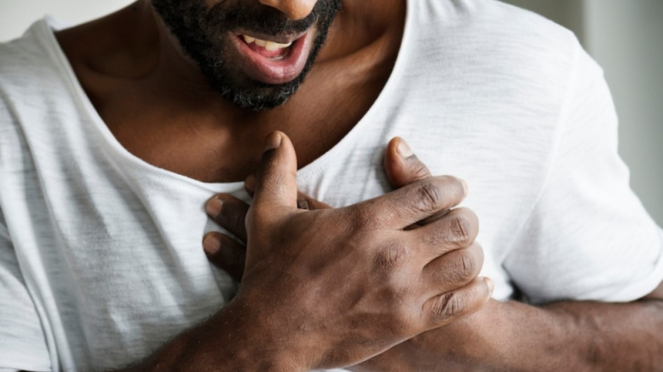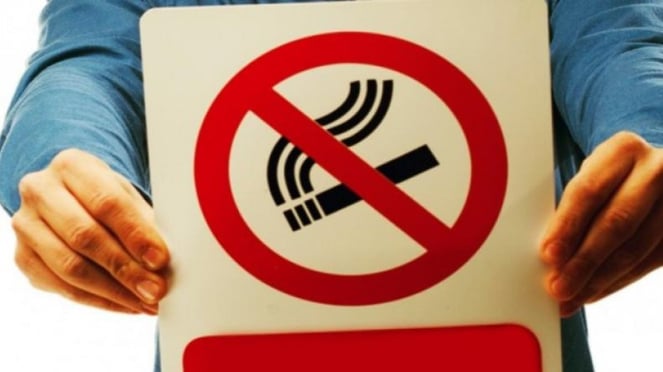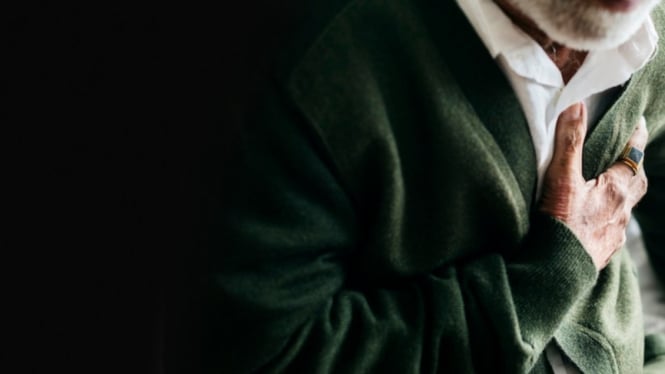VIVA Lifestyle – Sign and stroke symptoms varies from person to person, but usually starts suddenly. Because different parts of the brain control different parts of the body, the symptoms you feel will depend on the part of the brain affected and the extent of the damage.
Stroke is a condition when the blood supply to the brain is interrupted due to a blockage (stroke ischemic) or rupture of a blood vessel (hemorrhagic stroke). Without a blood supply, the brain does not get oxygen and nutrients, so cells in some areas of the brain do not function or die. This condition causes parts of the body controlled by the damaged area of the brain to not function properly.
If you have symptoms, and they go away while you wait for the ambulance, it is still important to go to the hospital for further action. After the initial assessment, you will be referred to a specialist for further examination to help determine reason strokes. You should be referred to see a specialist within 24 hours of the onset of symptoms. Treatment can also be started if necessary.
Stroke Symptoms
–
Stroke symptoms that go away quickly and in less than 24 hours could mean you have transient ischemic attack (TIA). These symptoms should also be treated as a medical emergency to reduce the chances of having another stroke. Quoted from NHSHere are some of the main symptoms of a stroke:
– The faces may fall to one side, the person may not be able to smile, or the mouth or eyes may droop.
– Arms – the person may not be able to lift both arms and hold them there due to weakness or numbness in one arm.
– Speech – speech may be slurred or slurred, or the person may not be able to speak at all even though he appears awake; they may also have trouble understanding what you are telling them.
– Timing – it’s time to call your doctor right away if you notice any of these signs or symptoms.
It’s important for everyone to be aware of these signs and symptoms, especially if you live with or care for someone who is in a high-risk group, such as someone who is elderly or has diabetes or high blood pressure.
Other symptoms
Symptoms in the FAST test identify most strokes, but sometimes a stroke can cause different symptoms. Other signs and symptoms may include:
- total paralysis on one side of the body
- sudden loss or blurred vision
- dizzy
- confusion
- difficulty understanding what other people are saying
- problems with balance and coordination
- difficulty swallowing (dysphagia)
- a sudden and severe headache that resulted in a blinding pain like no one had ever experienced before
- loss of consciousness
But there may be other causes for this symptom.
Types of causes of stroke by type
 –
–
Illustration of a heart attack/stroke.
–
–
In general, there are two main causes of stroke: clogged arteries (ischemic stroke) or leakage or rupture of blood vessels (hemorrhagic stroke).
In addition, some people may experience only a temporary interruption of blood flow to the brain, known as a minor stroke or stroke Transient ischaemic attack (TIA). The following is an explanation of the causes of stroke which are distinguished by type:
Ischemic Stroke
Ischemic stroke The most common type of stroke occurs when a blood vessel in the brain is narrowed or blocked. When ischemic stroke When this occurs, blood flow is greatly reduced (ischemia).
These blocked or narrowed blood vessels are caused by fatty deposits that build up in the blood vessels or by blood clots and other debris flowing through the bloodstream, most often from the heart, and then lodged in blood vessels in the brain.
Hemorrhagic Stroke
hemorrhagic stroke It occurs when a blood vessel in the brain leaks or bursts. Brain hemorrhages can result from many conditions that affect the blood vessels. Factors related to hemorrhagic stroke These include uncontrolled high blood pressure (hypertension), overtreatment with blood thinners (anticoagulants), a bulge in a weak spot in the vessel wall (aneurysm), trauma such as a car accident, and protein deposits in the vessel wall that cause weakness in the arteries. blood vessel walls (cerebral amyloid angiopathy).
Transient ischemic attack (TIA)
Symptoms of a transient ischemic attack (TIA), also known as a minor stroke, are the same as those of a stroke, but tend to last only between a few minutes and a few hours before disappearing completely.
Even if the symptoms improve, a TIA should not be ignored as it is a serious warning sign of a problem with the blood supply to the brain. This means you are at an increased risk of having a stroke in the near future.
It is important to contact the hospital immediately and ask for an ambulance if you or someone else has symptoms of a TIA or stroke. If a TIA is suspected, you will be offered aspirin to take immediately. This helps prevent strokes.
Even if the symptoms go away while you wait for the ambulance to arrive, a hospital assessment should still be done. You should be referred to see a specialist within 24 hours of the onset of symptoms.
If you think you’ve had a TIA before, but the symptoms have passed and you didn’t seek medical advice at that point, make an appointment with your GP right away. They can refer you for a hospital check, if necessary.
 –
–
Illustration don’t smoke.
–
–
The main way to prevent stroke is to adopt a healthy lifestyle. In addition, identify and avoid the existing risk factors and follow the doctor’s advice. Various stroke prevention measures, including:
Eating too many salty and fatty foods can increase the amount of cholesterol in the blood and the risk of hypertension that triggers a stroke. Therefore, avoid excessive salt consumption. The recommended foods are foods that are rich in unsaturated fats, protein, vitamins, and fiber. All these nutrients can be obtained from vegetables, fruit, whole grains, and low-fat meats such as skinless chicken breast.
Regular exercise can make the heart and circulatory system work more efficiently. Exercise can also lower cholesterol levels and keep weight and blood pressure at healthy levels.
People who smoke are twice as likely to have a stroke. Because smoking can narrow blood vessels and make blood clot easily. Not smoking means reducing the risk of various other health problems, such as lung and heart disease.
- Avoid consuming alcoholic beverages
Liquor is high in calories. If consumed in excess, a person is susceptible to various stroke-triggering diseases, such as diabetes and hypertension. Drinking alcohol in excess can also cause an irregular heartbeat.
Some types of Narcotics, Psychotropics and Addictive Substances (Drugs) can cause narrowing of the arteries and reduce blood flow. So avoid using drugs.
Thus a review of the symptoms of stroke, and how to prevent it. Hopefully this article will help you deal with the symptoms of a stroke and act immediately if you experience it.
–


